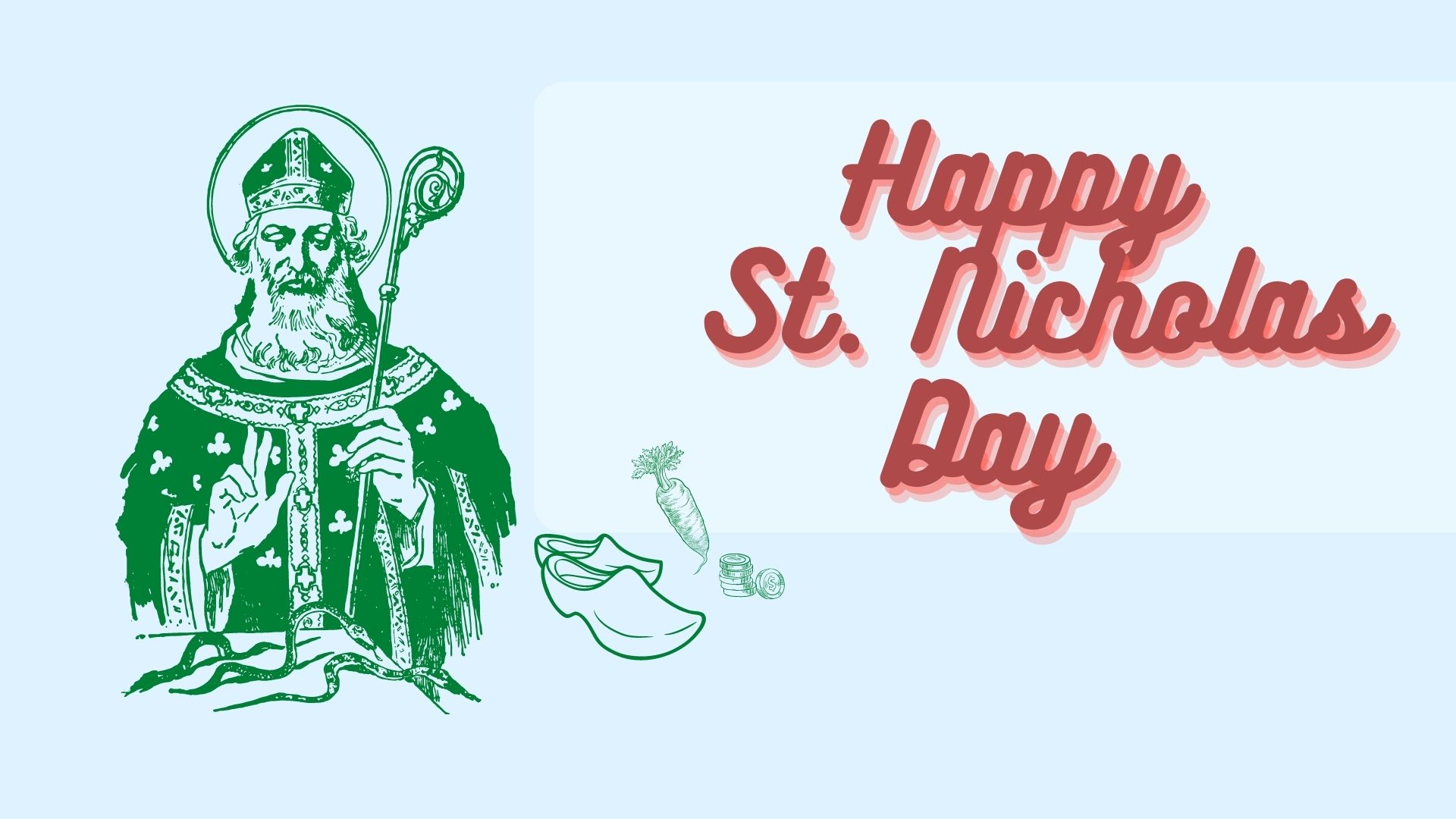St. Nicholas, the fourth-century patron saint of children, inspires traditions around the world from hunts for presents to stockings or shoes filled with sweets.
St. Nicholas was a bishop who was known for his good deeds, especially for the needy and children. He often gave generously and anonymously. Nicholas was officially recognized as a saint in the 800s and in the 1200s Catholics in France began celebrating Bishop Nicholas Day on December 6.
Many countries in Europe celebrate the Feast of Sinterklaas—also known as St. Nicholas— by sharing candies, chocolate letters, small gifts, and riddles. Children put out their shoes with carrots and hay for the saint’s horse, hoping St. Nicholas will exchange them for small gifts.
It is the Dutch pronunciation of his name—Sinterklaas that gives us the name Santa Claus. Some of our Santa Claus traditions came from St. Nicholas Day, such as gift-giving and the candy cane, a symbol of his staff.
It might help to explain Santa Claus by telling the story of St. Nicholas, a real saint who bestowed gifts onto others to demonstrate his faith.

